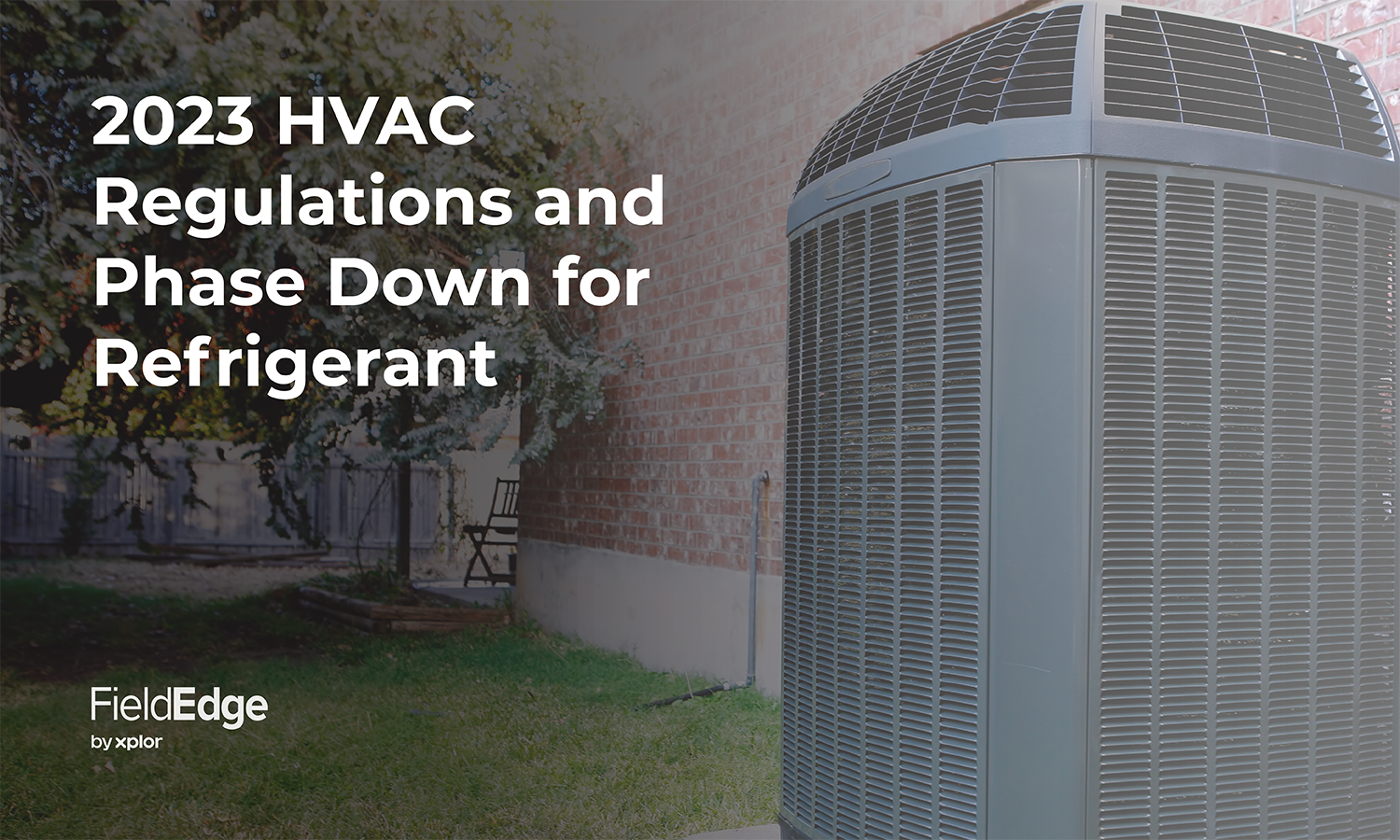Refrigerant regulations are changing at a steady pace, which is why it’s critical for HVAC professionals to be aware and compliant with the 2023 HVAC regulations for refrigerant. This is the best way to keep your business on the right path to maximize profits.
After reading this, you’ll be:
- Up to date on the latest 2023 HVAC regulations and best practices
- Ready to pivot your business when refrigerants need to be changed
In this article, we will cover the 2023 HVAC regulations in detail as well as the key dates for HVAC phasedown for certain high-global warming potential refrigerants.
Why 2023 HVAC Regulations for Refrigerant Matters
The use of refrigerants in HVAC systems is regulated by the Environmental Protection Agency (EPA) through its Significant New Alternatives Policy (SNAP) program.
Since 2010, residential cooling systems have contained a refrigerant called R-410a. This is a hydrofluorocarbon (HFC) that has high global warming potential, and could harm the environment if it leaks from a cooling system.
Consequently, EPA is phasing down the manufacture and importation of HFCs by 85 percent over the next 15 years.
HVAC Phase-Down
The HVAC phase-down refers to the gradual reduction in the production and consumption of certain high-global warming potential (GWP) HFC refrigerants as part of the EPA’s SNAP program.
The HVAC phase-down is part of a larger effort to reduce greenhouse gas emissions and combat climate change.
The following are some key dates related to the HVAC phase-down:
2021: The first phase of the HVAC phase-down began in 2021, with restrictions on the production and consumption of some HFC refrigerants.
2023: Further restrictions on HFC production and consumption are expected to take effect in 2023. To lower global warming potential R-410A will be replaced with lower alternatives such as R-454B. Dates will be announced as they become available.
2028 and beyond: Additional reductions in HFC production and consumption are expected in the years to come. This is a result of the EPA continuing to phase down the use of high-GWP refrigerants in the HVAC industry.
It’s important to note that these dates and the specific restrictions on HFC production and consumption may change in the future. Which means, it’s important to stay up-to-date on the latest developments related to the HVAC phase-down.
New 2023 HVAC Regulations and Best Practices
When implementing the HFC phase-down, there’s key information and best practices to keep in mind.
- HFC alternatives: As HFCs are phased down, HVAC technicians and manufacturers are encouraged to adopt low-GWP alternative refrigerants, such as hydrofluoroolefins (HFOs) and natural refrigerants like CO2 and ammonia.
- Certified technicians: Only certified technicians, who have received proper training and certification, should handle refrigerants in HVAC systems.
- Proper refrigerant management: HVAC technicians must follow best practices for refrigerant management, including proper refrigerant handling, recovery, and disposal to minimize releases to the environment.
- Leak detection: Regular leak detection and repair should be performed to minimize refrigerant releases from HVAC systems.
It’s important to stay up-to-date on the latest 2023 HVAC regulations and best practices for the use of refrigerants, as the regulations and guidelines may change in the future.
Tax Credits and Rebate Guidelines
The Inflation Reduction Act of 2022 (IRA), signed into law in mid August, 2022, allows for new federal spending toward reducing carbon emissions, among other initiatives.
This act provides tax credits and point-of-sale rebates of thousands of dollars toward the installation of high-efficiency HVAC equipment.
Furthermore, the IRA Incentives provides tax credits for homeowners replacing aging equipment with high-efficiency HVAC systems. Homeowners will need to meet certain requirements to qualify.
Incentives include:
- Energy Efficient Improvement Credit 25C: Increases tax credit value from 10% to 30% for high efficiency tier products up to $600 for air conditioners and furnaces and a maximum of $2,000 for heat pumps.
- Homes Rebate Program: Homeowners may qualify for up to $8,000 rebate for installation of high efficiency equipment.
- High-Efficiency Electric Home Rebate Program: States must apply for funds and set up their programs: The maximum rebate is $14,000. These are income dependent and include:
- All electric ENERGY STAR heat pumps: up to $8,000
- Air sealing insulation and ventilation: up to $1,600
- Electric load service center: up to $4,000
- Electric wiring: up to $2,500
Keep in mind, these are merely guidelines, and you should consult a tax professional for rebate program eligibility in your state.
Learn more about rebates and SEER2 compliance here:
You’re Ready for 2023 HVAC Regulations
With the information presented today, you are now more aware of the guidelines and regulations going forward. Check back as more dates become available.
Here are a few key takeaways:
- Phase down will continue in the coming years to reduce high-global warming potential (GWP) HFC refrigerants. Staying on top of these requirements will benefit your business.
- Significant tax credits and rebates are available to homeowners wishing to install high-efficiency HVAC equipment.
Use the latest information on 2023 HVAC regulations for refrigerant to prepare your business for long-term success!
Related: New 2023 Residential Efficiency Standards: What HVAC Companies Should Know



